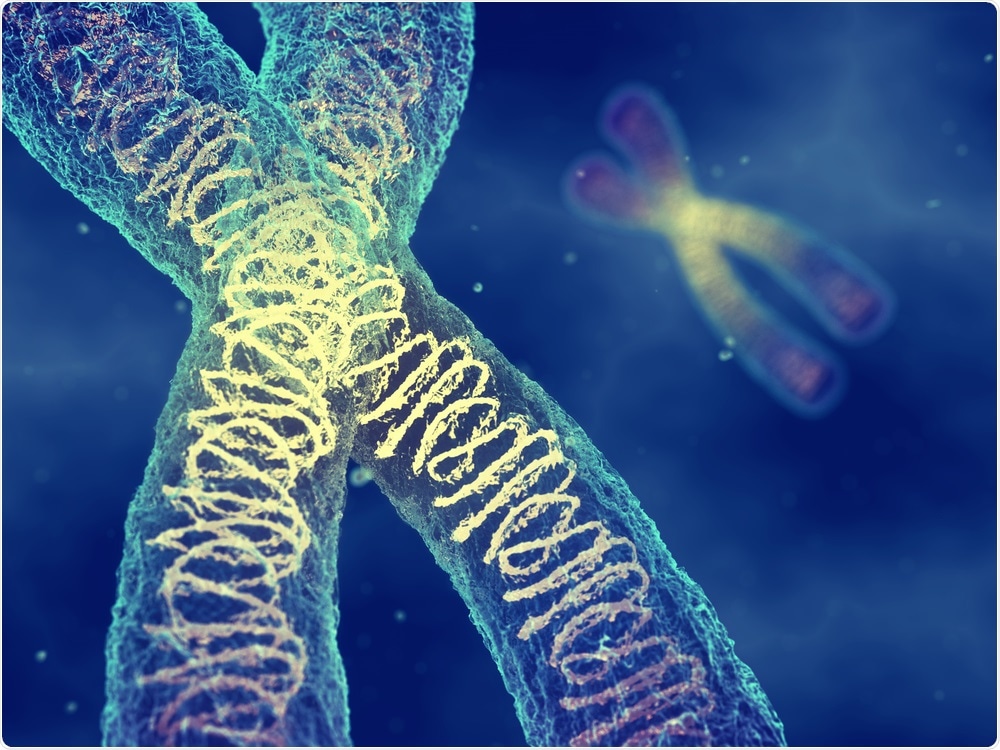The logic that handles gene regulation in human cells has been discovered by a team of researchers at the University of Helsinki. In the coming years, this new information could be used to investigate cancers and other genetic problems.

Image Credit: nobeastsofierce/Shutterstock.com
Gene regulation is a critical process that regulates gene activity in cells. Incorrect gene regulation can play a role in the development of many illnesses, including cancer.
The human genome’s DNA carries genes that code for proteins, which provide muscle cells with power and brain cells with the ability to process information. DNA also includes gene regulatory elements that control when and where genes are expressed, ensuring that muscle genes are expressed in muscles and brain genes are expressed in the brain.
However, the regulatory code that governs gene activity is still unknown. Although the human genome contains nearly three billion base pairs, it is too limited to learn the gene regulatory code solely from the genomic sequence. The problem is related to that of a linguist attempting to understand a long-forgotten language based on a few short texts.
Professor Jussi Taipale’s research group, which is part of the Academy of Finland’s, has now found a method around this problem to fix the regulatory code.
The new research was published recently in the Nature Genetics journal.
We measured the gene regulatory activity from a collection of DNA sequences that together are 100 times larger than the entire human genome.”
Biswajyoti Sahu, Study First Author and Research Fellow, Academy of Finland
Describing the innovative approach, Sahu also adds, “Instead of using the natural genomic sequence, we introduced random synthetic DNA sequences to human cells. Then, the cells themselves were allowed to read the new DNA and highlight for us the sequences that function as active regulatory elements.”
Researchers identify the key atomic unit of gene expression
The researchers generated their large dataset using a method called a massively parallel reporter assay, which allows the regulatory activity of millions of DNA sequences to be investigated all at the same in a single large-scale assay. Artificial intelligence tools were used to examine the data.
Transcription factors are proteins that bind to DNA and control gene expression. The scientists found that the very short DNA sequences to which these aspects bind are the fundamental atomic unit of gene expression. Individual transcription factors have an additive effect on gene regulation.
In other words, each factor enhances regulatory activity independently of the others, with no direct interaction. Furthermore, transcription factors may perform multiple functions in the gene regulatory process, such as increasing the rate of gene expression or specifying the genomic area where transcription begins.
The binding motifs of transcription factors can be thought to be like words that together define the cellular gene regulatory code.”
Jussi Taipale, Professor, Centre of Excellence in Tumor Genetics Research, Academy of Finland
The researchers discovered that the code’s grammar is fairly weak and that most terms can be rearranged in almost any order without modifying their meaning.
“However, in some cases analogous to compound words, the grammar is strong, and specific combinations of factors need to bind in a certain order to activate gene expression,” Taipale adds.
Only a handful of highly active transcription factors in cells
The researchers analyzed three varieties of human cells: colon and liver cancer cells, and also normal retinal cells. They discovered that only a few transcription factors are extremely active in cells. Furthermore, irrespective of cell type, most transcription factor actions are similar.
The finding showed that gene regulatory elements in human cells can be categorized into different types depending on the chromatin context in which they are found—either in closed chromatin regions with tightly packed DNA, or in more open chromatin surroundings with less densely packed DNA around histone proteins.
Conventionally, active regulatory elements were thought to be found in open chromatin regions where transcription factors could easily obtain DNA. As a result, one of the research’s most important new findings is the exploration of active regulatory elements that perform within closed chromatin regions.
Furthermore, the scientists found chromatin-dependent regulatory elements. These elements are active in their normal locations in the genome, but their activity decreases significantly when they are moved close to some other gene.
Source:
Journal reference:
Sahu, B., et al. (2022) Sequence determinants of human gene regulatory elements. Nature Genetics. doi.org/10.1038/s41588-021-01009-4.